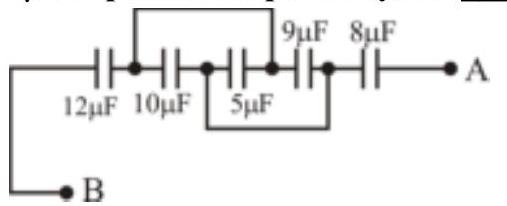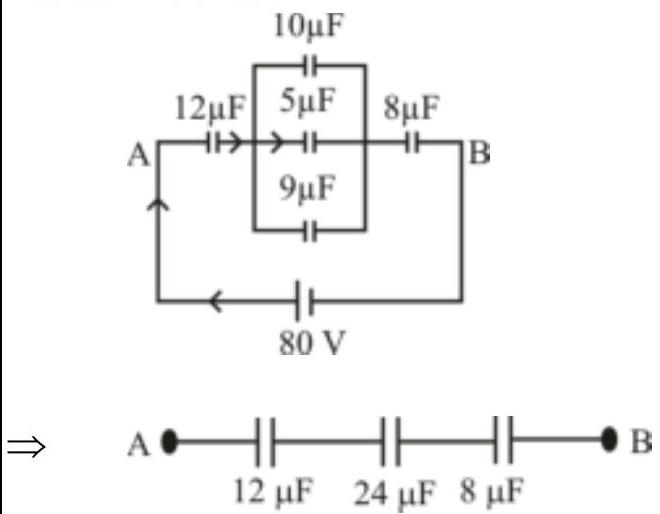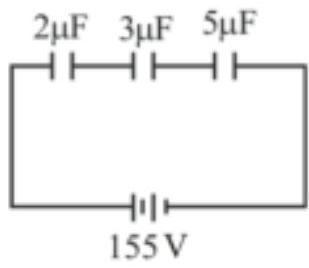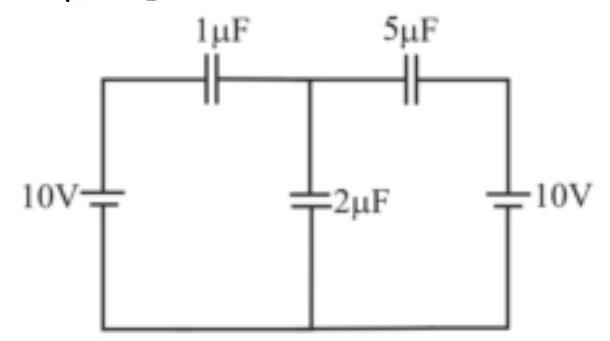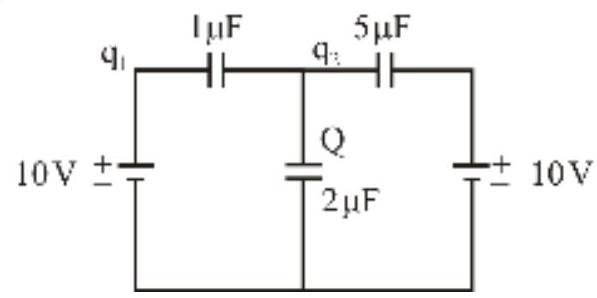165817
Assertion: If three capacitors of capacitances $\mathrm{C}_{1}<$ $\mathrm{C}_{2}<\mathrm{C}_{3}$ are connected in parallel then their equivalent capacitance $\mathrm{Cp}>\mathrm{Cs}$.
Reason: $\frac{1}{\mathrm{C}_{\mathrm{p}}}=\frac{1}{\mathrm{C}_{1}}+\frac{1}{\mathrm{C}_{2}}+\frac{1}{\mathrm{C}_{3}}$
165817
Assertion: If three capacitors of capacitances $\mathrm{C}_{1}<$ $\mathrm{C}_{2}<\mathrm{C}_{3}$ are connected in parallel then their equivalent capacitance $\mathrm{Cp}>\mathrm{Cs}$.
Reason: $\frac{1}{\mathrm{C}_{\mathrm{p}}}=\frac{1}{\mathrm{C}_{1}}+\frac{1}{\mathrm{C}_{2}}+\frac{1}{\mathrm{C}_{3}}$
165817
Assertion: If three capacitors of capacitances $\mathrm{C}_{1}<$ $\mathrm{C}_{2}<\mathrm{C}_{3}$ are connected in parallel then their equivalent capacitance $\mathrm{Cp}>\mathrm{Cs}$.
Reason: $\frac{1}{\mathrm{C}_{\mathrm{p}}}=\frac{1}{\mathrm{C}_{1}}+\frac{1}{\mathrm{C}_{2}}+\frac{1}{\mathrm{C}_{3}}$
165817
Assertion: If three capacitors of capacitances $\mathrm{C}_{1}<$ $\mathrm{C}_{2}<\mathrm{C}_{3}$ are connected in parallel then their equivalent capacitance $\mathrm{Cp}>\mathrm{Cs}$.
Reason: $\frac{1}{\mathrm{C}_{\mathrm{p}}}=\frac{1}{\mathrm{C}_{1}}+\frac{1}{\mathrm{C}_{2}}+\frac{1}{\mathrm{C}_{3}}$
